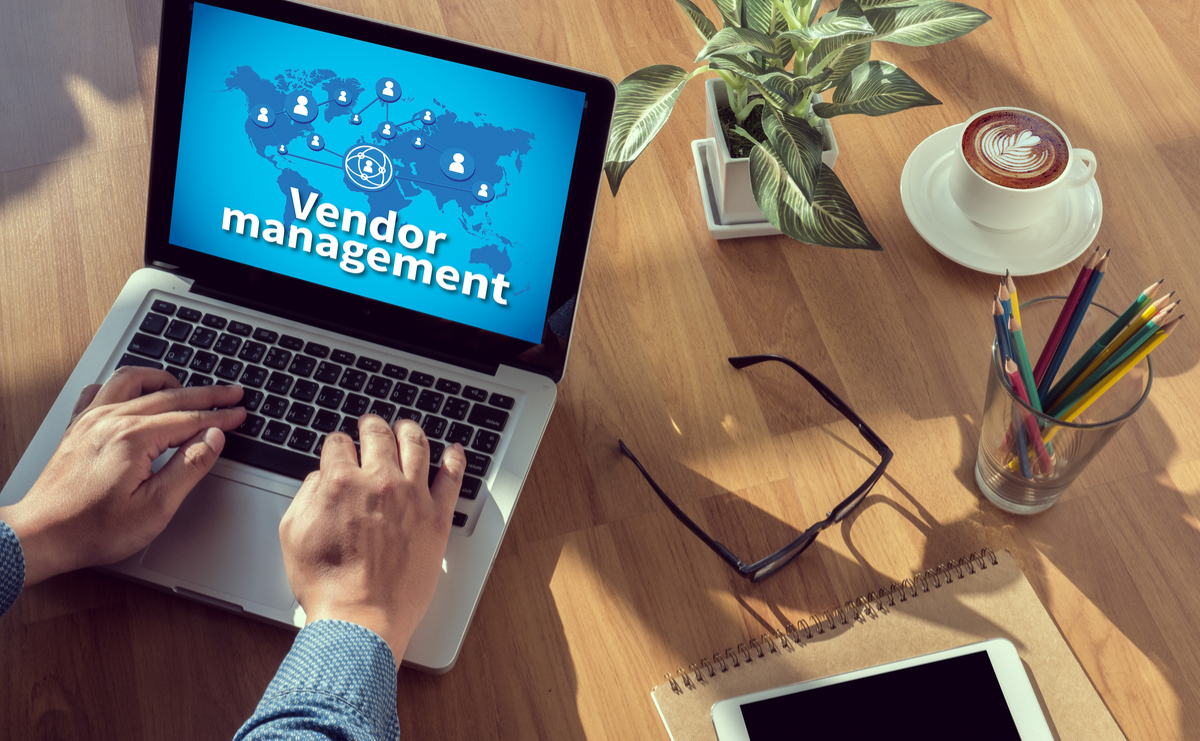
Part 1. What is Vendor Management (VMS)
The main reason why companies are dependent on the external workforce that includes contractors, seasonal and temporary workers, and services firms is due to increased globalization, the requirement to fill specialized roles, and a more competitive marketplace.
With the present remote and digitally-based global talent, firms can hire services and individuals throughout the world with greater agility, and flexibility. In this way, it can secure in-demand talent, scale up or down, increase speed to value, and edging out the less agile competition.
Identifying and dealing with the right combination of labor, can prove to be challenging for an organization. There can be legal, monetary, security, compliance, and cost implications associated with recruiting a flexible and geographically-distributed workforce.
A vendor management system is cloud-based software that helps global enterprises to identify, engage, and manage an external workforce. This workforce could be either contract-based or contingent services providers or labor.
This online web-based tool serves as a single node for the management of all vendor-related activities and vendor management process flow in a business. It ensures long-term growth and improved efficiency in an affordable manner.
So, having understood what is vendor management, let us learn about the advantages of proper vendor management in a business.
- Better selection from a wider selection of vendors that results in better costs
- Better centralized contract management helps an organization to gain enhanced decision-making abilities and saves valuable time.
- Better performance management leads to the enhanced overall efficiency of an organization.
- Better vendor relationship that leads to successful project completion
- The proper implementation of VMS results in better value, long-term savings, and improved earnings over some time.
Implementation of a vendor management strategy is a multi-stage process of beginning and forming relations with providers of services and goods. The initial stages of vendor relationship management comprise of:
- Vendor selection
- Risk assessment
- Contract negotiation
- Onboarding
- Managing vendor’s performance and controlling risk
Transformify is a leading company that provides a Freelancer Management System. It provides the following benefits to a business:
- Onboarding process customization
- Source Flexible Workforce
- Post External and Internal Projects
- Copy Shortlists Easily and Fill Job positions in No Time
Part 2. Features of Vendor Management System
Different vendor management solutions provide different features to their clients. It is required that every business should consider these features as well as value propositions to make the right selection. A robust VMS is seen to have the following attributes:
Complete Workforce Visibility
This feature of vendor management software helps businesses take a more systematic and organized approach to manage a flexible workforce. It makes it easy to achieve complete workforce visibility, enhance efficiencies and quality of workers, enforce compliance and maximize cost savings.
Tracking of suitable applicants
Top VMS also comes with effective applicant tracking functionalities. It assists organizations to obtain the best services, and talent thereby creating a highly efficient hiring process. Recruiters get remote access to quickly reject or approve items, thereby enabling the workflow to advance without any delay.
Comprehensive Reporting
Vendor management tools enable users to precisely evaluate cost, time, quality, quantity, and compliance by creating data-driven comprehensive reports, and comparing the industry evaluation.
Data Analysis
The software is also equipped with data analytics capabilities that enable improved decision-making in the enterprise. It provides direct access to the full contingent workforce program of the organization to measure successes, perform necessary adjustments and generate positive results.
Part 3. Best Practices to Improve your Vendor Management Strategy

You may have the best VMS for your organizational needs, but it is of no use if it is not implemented correctly. For the best results, this cloud-based vendor management software has to be integrated with the procurement processes of an organization. The following vendor management best practices will help in the efficient execution of the system in an organization.
Clearly state your expectations
It is important to clearly define the organizational goals and expectations from the vendors. It will help the vendors learn about your present and future needs and how they align with the objectives of the organization.
Set realistic and achievable deadlines
It is also required to set deadlines that are easy to fulfil by the vendors. Setting impossible deadlines obstruct the performance of vendors as well as value creation. It also enhances risk as well as prevents meaningful collaboration.
Collaborate with vendors for maintaining long-term relationships
Collaboration with vendors is also essential to achieve the expectations and goals. It results in the development of a valuable and long-term building of relationships. Collaboration also enables the enterprise as well as the vendors to brainstorm fresh ideas about maximizing their partnership.
Establish KPIs to gauge Vendor Performance
Key Performance Indicators helps identify whether or not the vendors deliver as per the specified business goals and expectations. KPIs help measure the several facets of the vendors. It also helps know whether or not the VMS is effective.
The KPIs differ from one organization to another depending on what they find important while assessing the performance of vendors.
Following are the qualitative and quantitative ways to set KPIs and compute ROI of vendors:
- Relationship Management
- Cost Management
- Quality
- Delivery
- Customer Satisfaction
Evaluate Vendor Risks to reduce them to minimum
Several types of risks surround vendor management such as financial, operational, payment, data security, and compliance. As these threats keep changing, it is important to monitor the external and internal environment of the organization and evaluate the existing controls within the organization.
Risk assessment of VMS is an ongoing process that begins at the time of identifying the need for a vendor.
Part 4. Summary
With so many geographies involved in the sourcing, recruiting and onboarding of talent, there is immense potential for inefficiency, miscommunication, untracked procedures, and little visibility. Without the VMS, a company that that self-administers its extended workforce can face managerial and administrative challenges.
Vendor management process can be termed as all the steps that are taken to empower an organization to get exceptional service deliverability from their vendors. It also makes way to mitigate any potential risks and also to lower the operational costs. The goal is to get good service value, and to develop long-term business relationships with the vendors.
This comprises researching about the right vendors, sourcing as well as obtaining pricing information, gauging the work quality, managing relationships, assessing performance by establishing organizational standards, and ensures timely execution of payments.
Implementation of a few techniques and best practices would complement the process and make your vendor management a lot more effective.



